Bagneux British Cemetery
Roll of Honour
A - L
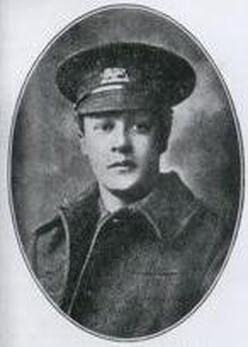
3320 Private
Robert Challoner
2nd/5th Bn. King's Own (Royal Lancaster Regiment)
26th May 1918, aged 25.
Plot II. D. 20
Son of Charles and Ann Challoner, of 10, Church Rd., Lytham, Lancs.
Picture courtesy of John Garlington
Robert Challoner
2nd/5th Bn. King's Own (Royal Lancaster Regiment)
26th May 1918, aged 25.
Plot II. D. 20
Son of Charles and Ann Challoner, of 10, Church Rd., Lytham, Lancs.
Picture courtesy of John Garlington
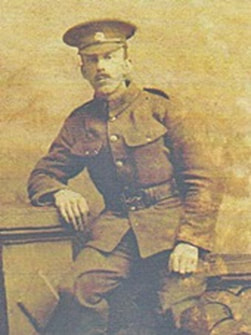
204219 Private
Thomas Alfred Cook
1st Bn. Hertfordshire Regiment
20th August 1918, aged 33*.(Died of gunshot wounds).
Plot IV. F. 4.
Son of Mr. and Mrs. T. Cook, of 10, Clarendon Rd., Luton, Beds.
*(Grave shows age at death as 33 but census details would make him only 31)
Picture courtesy of grandson, David Cook.
Thomas Alfred Cook
1st Bn. Hertfordshire Regiment
20th August 1918, aged 33*.(Died of gunshot wounds).
Plot IV. F. 4.
Son of Mr. and Mrs. T. Cook, of 10, Clarendon Rd., Luton, Beds.
*(Grave shows age at death as 33 but census details would make him only 31)
Picture courtesy of grandson, David Cook.
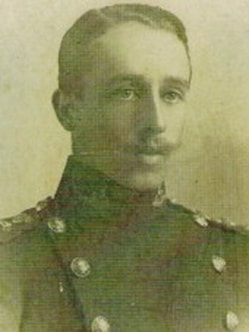
Lieutenant-Colonel
Hugh Courtenay, D. S. O., M. C.
1st Bn. Bedfordshire Regiment
23rd August 1918, aged 30.
Plot V. C. 18.
Son of Charles C. and Constance H. Courtenay, of Manor Farm House, East Horsley, Surrey
Picture courtesy of Rob & Penny Maitland-Stuart
Hugh Courtenay, D. S. O., M. C.
1st Bn. Bedfordshire Regiment
23rd August 1918, aged 30.
Plot V. C. 18.
Son of Charles C. and Constance H. Courtenay, of Manor Farm House, East Horsley, Surrey
Picture courtesy of Rob & Penny Maitland-Stuart
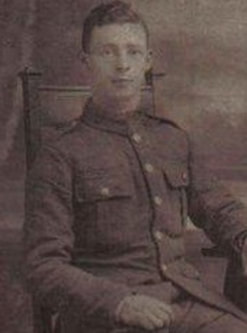
241430 Private
James Dean
1st/5th Bn. East Lancashire Regiment
31st August 1918, aged aged 22.
Plot VI. B. 25
Born Wiswell, Lancashire and enlisted at Burnley, Lancashire
Picture courtesy of niece, Pauline Littler
James Dean
1st/5th Bn. East Lancashire Regiment
31st August 1918, aged aged 22.
Plot VI. B. 25
Born Wiswell, Lancashire and enlisted at Burnley, Lancashire
Picture courtesy of niece, Pauline Littler
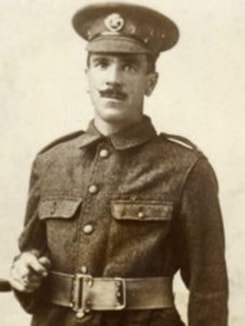
423910 Lance Corporal
Peter Eddy
10th Bn. London Regiment
24th August 1918, aged 39.
Plot IV. G. 5.
Son of William and Mary Eddy, of Glendurgan, Falmouth; husband of R. F. Eddy, of Durgan, Mawnan Smith, Falmouth.
Lance Corporal Peter Eddy, formerly of the Duke of Cornwall Light Infantry and latterly of the 10th Battalion London Regiment, who died on 24th August 1918 aged 39. He died from wounds received. He was the son of William and Mary Eddy of Mawnan Smith, Falmouth, Cornwall. He left his wife, Rosina Frances, and their five children.
Picture courtesy of grandson, William Salisbury
Peter Eddy
10th Bn. London Regiment
24th August 1918, aged 39.
Plot IV. G. 5.
Son of William and Mary Eddy, of Glendurgan, Falmouth; husband of R. F. Eddy, of Durgan, Mawnan Smith, Falmouth.
Lance Corporal Peter Eddy, formerly of the Duke of Cornwall Light Infantry and latterly of the 10th Battalion London Regiment, who died on 24th August 1918 aged 39. He died from wounds received. He was the son of William and Mary Eddy of Mawnan Smith, Falmouth, Cornwall. He left his wife, Rosina Frances, and their five children.
Picture courtesy of grandson, William Salisbury
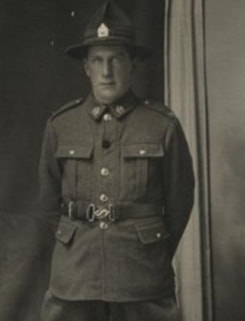
51831 Rifleman
Arnold Emmett
3rd Bn. New Zealand Rifle Brigade
31st August 1918, aged 24.
Plot VI. E. 18.
Son of Arthur William and the late Jane Emmett, of Quinn's Rd., Shirley, Christchurch, New Zealand.
Picture courtesy of great niece, Dr Jennie Coleman
Arnold Emmett
3rd Bn. New Zealand Rifle Brigade
31st August 1918, aged 24.
Plot VI. E. 18.
Son of Arthur William and the late Jane Emmett, of Quinn's Rd., Shirley, Christchurch, New Zealand.
Picture courtesy of great niece, Dr Jennie Coleman
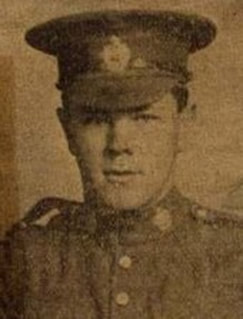
709987 Private
Roy Eugene Graham
26th Bn. Canadian Infantry (New Brunswick Regiment)
12th June 1918
Plot III. B. 23
Picture courtesy of Jim Walker
Roy Eugene Graham
26th Bn. Canadian Infantry (New Brunswick Regiment)
12th June 1918
Plot III. B. 23
Picture courtesy of Jim Walker
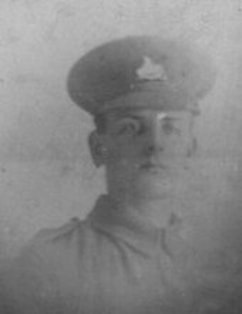
21624 Lance Corporal
Jack Keyworth
2nd Bn. Lincolnshire Regiment
31st August 1918, aged 22.
Plot VI. B. 37.
Picture courtesy of Suzi Strafford
Jack Keyworth
2nd Bn. Lincolnshire Regiment
31st August 1918, aged 22.
Plot VI. B. 37.
Picture courtesy of Suzi Strafford

81605 Private
John W. Lawrenson
15th Bn. Durham Light Infantry
27th August 1918, aged 31.
Plot V. B. 1C
Eldest son of Mary Ann and the late Magnus Lawrenson, of 58, Hinge St., South Shields.
Picture courtesy of Jeff Harkness, great cousin of this soldier
John W. Lawrenson
15th Bn. Durham Light Infantry
27th August 1918, aged 31.
Plot V. B. 1C
Eldest son of Mary Ann and the late Magnus Lawrenson, of 58, Hinge St., South Shields.
Picture courtesy of Jeff Harkness, great cousin of this soldier




